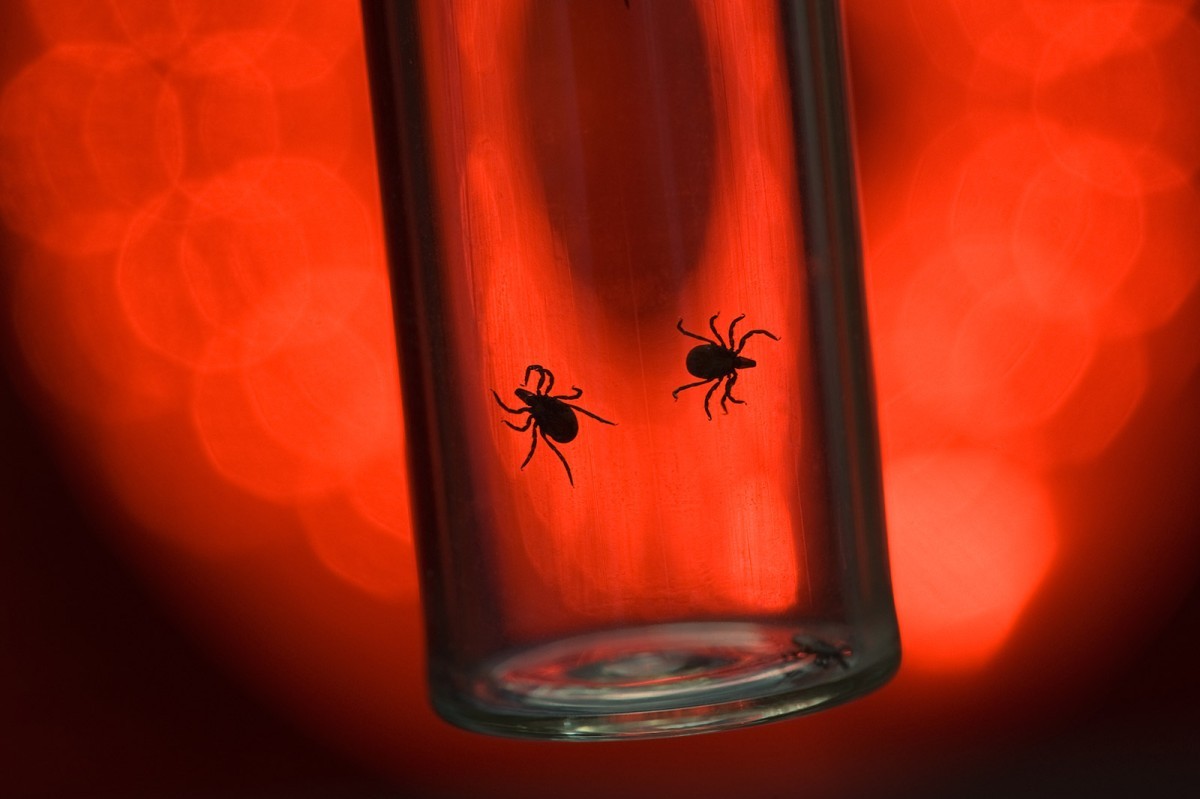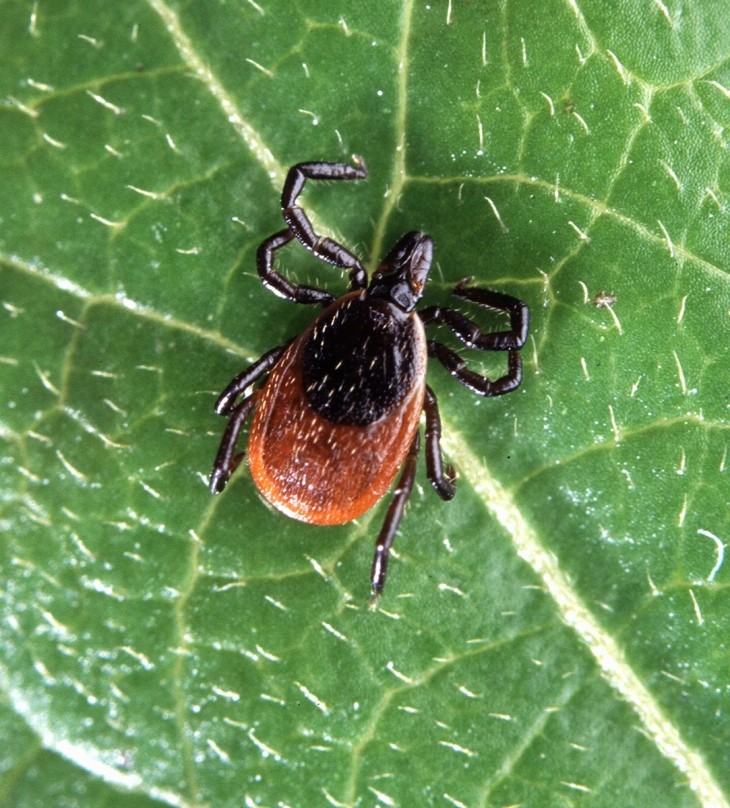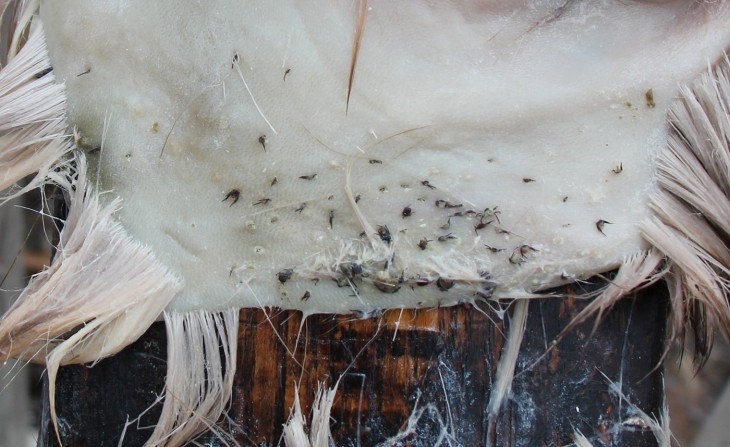Those of us who have lived in the Northeast long enough remember a time when ticks rarely crossed our paths – or our minds. Especially in the northern parts of New England and New York, tick sightings were rare.
Now, these eight-legged creepy-crawlies seem to be everywhere: in beach grasses near the coast, in the brushy growth along riverbanks, throughout wooded areas, and in backyards. With the rise in ticks has come a corresponding rise in tick-borne diseases.
While Lyme disease has long been a concern among those who work and recreate outdoors – and for good reason – researchers have now identified a host of other illnesses spread by ticks throughout the Northeast.
These include anaplasmosis, babesiosis, Borrelia miyamotoi disease, ehrlichiosis, and Powassan virus.
All are transmitted by the black-legged tick (Ixodes scapularis, sometimes called the deer tick) in its tiny nymph and slightly larger adult stages. Some diseases may also be transmitted by other tick species; there are more than two dozen types of tick found in the Northeast. However, “the black-legged tick is kind of the bad guy,” said Patti Casey, Environmental Surveillance Program Director for the Vermont Agency of Agriculture, Food and Markets. While some tick species feed almost exclusively on one or a few specific host species, the black-legged tick, she said, “tends to have a very broad menu.”
That menu ranges from small animals, where tick larvae or nymphs often pick up pathogens, to larger ones, like humans, where they can pass those pathogens along. Part of the reason ticks are so effective at transmitting disease is that they feed for several days – and they often remain undetected during that time.
Lifecycle and Transmission
A tick’s lifecycle usually lasts two to three years, as black-legged ticks require three hosts to progress from an egg to a reproducing adult.
Black-legged tick eggs, laid in masses of 1,500 to 2,000, generally hatch in late spring. The hatched ticks are called larvae, and they spend their first summer looking for a blood meal, which generally comes from a small host like a bird or a small mammal.
Once full, the tick larva drops off and molts into a nymph. Black-legged tick nymphs are tiny – one to two millimeters, or about the size of a poppy seed. They are most active from May through July, when they seek hosts that range from small mammals to larger ones – like deer, humans, or the family dog. Once attached to a host, a nymph will feed for several days before again dropping off its host and molting, for the final time, into an adult tick. Adults are slightly larger – two to three millimeters, about the size of a sesame seed.
While adult male ticks seldom feed again, adult females will seek a final blood meal from a large mammal – often a deer. The male tick seeks an engorged female to mate with on the host. The lifecycle comes full circle when the female falls off the host, lays her eggs, and dies.
Ticks typically pick up disease-causing bacteria or viruses from a host during their larval and nymphal stages. Nymphs are more likely to transmit tick-borne diseases simply because their tiny size makes them harder to detect and, therefore, less likely to be removed quickly from a human host.
While it is difficult to determine the precise amount of time it takes for a tick to transmit a disease to its host, we can make an educated guess. The Centers for Disease Control and Prevention (CDC) states that, “In most cases, the tick must be attached for 36 to 48 hours or more before the Lyme disease bacterium can be transmitted.” These numbers are based on lab testing with rodents. Some Lyme-watchers believe that in some scenarios, Lyme disease can transmit more quickly to humans.
In the same lab conditions, other tick-borne diseases transmitted more quickly than Lyme. Scientists documented the transmission of Borrelia miyamotoi and the development of anaplasmosis within 24 hours of a tick’s attachment. Most alarming is a study indicating Powassan virus may be transmitted in as little as 15 minutes of attachment time.
Ticks are able to stay attached – and undetected – due to a combination of their barbed mouthparts and their release of an anesthetic substance as they dig into a host’s skin. A tick grasps the skin with two barbed structures called chelicerae, which spread the skin and allow the tick to insert its spiked hypo-stome, a straw-like appendage. The barbs keep the tick firmly attached to a host, so it can’t be brushed off easily.
As it attaches, a tick can secrete small amounts of saliva with anesthetic properties, which means the host won’t feel those barbs sinking in. While a person may feel a tick crawling around looking for a place to attach – selecting that spot can take anywhere from a few minutes to a couple of hours - once the tick digs in, its host is unlikely to feel it.
Tick-borne Diseases Besides Lyme
While it’s clear there are more ticks of various species in the Northeast and throughout the United States than there were a decade ago, the reasons for this increase are not certain. Experts point to shifts in land use and changing climate patterns as likely contributing factors.
With increased tick populations, it’s not surprising that tick-borne diseases are also on the rise. The CDC notes an increase of more than 300 percent in the counties considered to be at high risk for Lyme disease in the Northeast and the Midwest from 1993 to 2012. And reported cases of a range of tick borne diseases nationwide rose more than 20 percent from 48,610 in 2016 to 59,349 a year later. The CDC also notes the likelihood that many tick-borne diseases go unreported, so in reality both numbers may be quite a bit higher.

Part of the challenge is to change the perception that ticks – or at least the kinds that spread disease – do not exist in the northern reaches or higher elevations of the Northeast.
“We’re definitely seeing a dramatic rise of human cases of tick-borne diseases,” said Lee Ann Sporn, a biology professor at Paul Smith’s College in the Adirondack region of New York. “Ticks are now in higher elevations, and we’re seeing new diseases up here.”
Tick-borne diseases in the Northeast other than Lyme include the following:
Anaplasmosis: Caused by the bacterium Anaplasma phagocytophilum, anaplasmosis is the most common tick-borne disease in the Northeast after Lyme disease. Though fewer than three cases were reported annually in Vermont between 2008 and 2010, more than 200 human cases of anaplasmosis were reported in 2016. Similarly, reported cases of anaplasmosis nearly doubled in Maine between 2012 and 2017, and in New Hampshire, the number rose from 88 in 2013 to 317 in 2017.
Symptoms of anaplasmosis generally begin between 5 and 21 days after a bite from an infected tick. They may include general malaise, fever, chills, headache, muscle pain, nausea, and confusion.
Anaplasmosis is curable (the CDC suggests treatment by the antibiotic doxycycline), but the disease can be fatal if untreated.
Babesiosis: Babesiosis, caused by a parasite that attacks red blood cells, is also on the rise in the Northeast, with 76 cases reported in New Hampshire in 2017 (up from 22 four years earlier) and 117 cases reported in Maine the same year. Fewer than 40 cases have ever been reported in Vermont through 2016, the last year for which numbers are available.
Symptoms of babesiosis typically begin one to four weeks after a tick bite and are similar to those of anaplasmosis – and Lyme disease – including fever, fatigue, and headache. However, the disease can be asymptomatic.
Those showing symptoms may be diagnosed using a blood test and can be treated with a combination of medications.
Borrelia miyamotoi: Borrelia miyamotoi presents with similar symptoms to other tick-borne diseases and is caused by the Borrelia miyamotoi bacterium, first discovered in Japan in 1995. The first case of the disease reported in the United States was in 2013; in 2016, both Vermont and Maine reported their first cases.
Tick-borne disease infection rates follow a bell curve throughout the summer, and most peak in June and July. However, the CDC reports that Borrelia miyamotoi infections peak most commonly in July and August. Another difference with this disease is that it may be spread by black-legged ticks in the larval stage, as the bacterium can be passed from an adult female to her eggs.
Like Lyme disease and anaplasmosis, Borrelia miyamotoi can be treated with doxycycline.
Ehrlichiosis: Unlike other tick-borne illnesses in the Northeast, ehrlichiosis is transmitted not by the black-legged tick but by the lone star tick (Amblyomma americanum), so named for the distinctive light-colored circle on its back. Also known as the turkey tick (after a preferred host), these ticks are newcomers to the Northeast.
Ehrlichiosis can be caused by one of several types of Ehrlichia bacteria and presents symptoms similar to those reported for other tick-borne illnesses. The disease can be fatal if not treated with antibiotics. While only a few cases have been reported in the Northeast, the lone star tick has been identified in most Northeastern states.
Powassan virus: While quite rare, Powassan virus is perhaps the most alarming of the tick-borne diseases found in the Northeast. It can be transmitted in a short time (as little as 15 minutes in one laboratory study), often presents no symptoms, has no known treatment, and can be fatal or cause permanent neurological damage.
The CDC reports three cases of Powassan virus in New Hampshire between 2008 and 2017, with sixteen in New York and six in Maine during the same period. Though the last reported case of Powassan virus infection in Vermont was in 1999, the Vermont Department of Health notes that diagnosis is difficult and cases of infection are likely underreported. When symptoms do occur, they include fever, headache, muscle soreness, vomiting, loss of coordination, difficulty speaking, and seizures.
Three types of ticks in the Northeast may carry Powassan virus: the black-legged tick, the squirrel tick (Ixodes marxi), and the woodchuck tick (Ixodes cookei). Black-legged ticks are the only species of the three likely to bite humans; squirrel and woodchuck ticks tend to stick to the host species for which they are named.
Forty percent of deer harvested in New York in 2018 showed signs of exposure to Powassan virus, according to Dr. Sporn. The New York State Department of Health states that one or two human cases of Powassan virus are reported in the state each year.
An Ounce of Prevention
The best way to avoid tick-borne diseases, of course, is to prevent tick bites.
“Part of [prevention] is to remember when the most risky times of year are and understand when you need to pull out all the stops,” said Alan Eaton, a retired University of New Hampshire professor and UNH Extension entomology specialist.
Nymphs tend to be most active from the spring snowmelt into July and again from October through mid-November, but ticks can be out “questing” – perched on tall grasses with their front legs outstretched, waiting for potential hosts to pass by – anytime there is no snow cover and the temperature is above freezing.
Completely avoiding brushy areas, tall grass, and wooded paths is an unrealistic option for people who work, garden, or recreate outside, so taking precautions when in tick habitat is important for preventing tick bites.
These precautions include wearing light-colored clothing, which makes detecting ticks easier; wearing long pants tucked into socks and tucking shirts into pants; wearing tall rubber boots; and using a repellent. Repellents include those used on clothing, like permethrin, and those sprayed directly onto the skin, which usually contain DEET or picaridin.
Checking thoroughly and carefully for ticks after being outside – or even during outings in the woods or in fields – is also important. Ticks typically like warm places like armpits, the groin, the backs of the knees, the space behind the ears, and the hairline on the neck.
“You control a large amount of the risk. You decide what you do, what you wear, whether you use repellents, whether you check yourself for ticks,” said Eaton. “Understand the risks; continue to protect yourself. But continue to get out and enjoy this wonderful place, too.”






